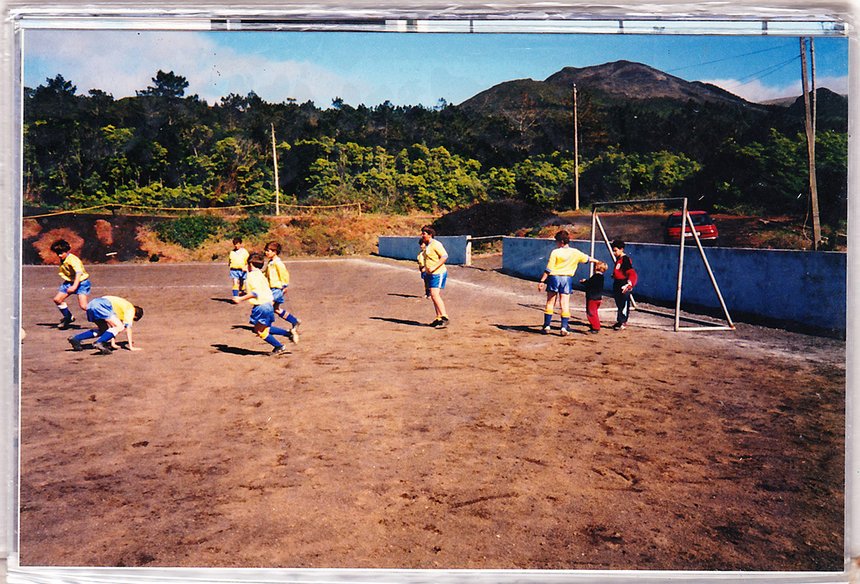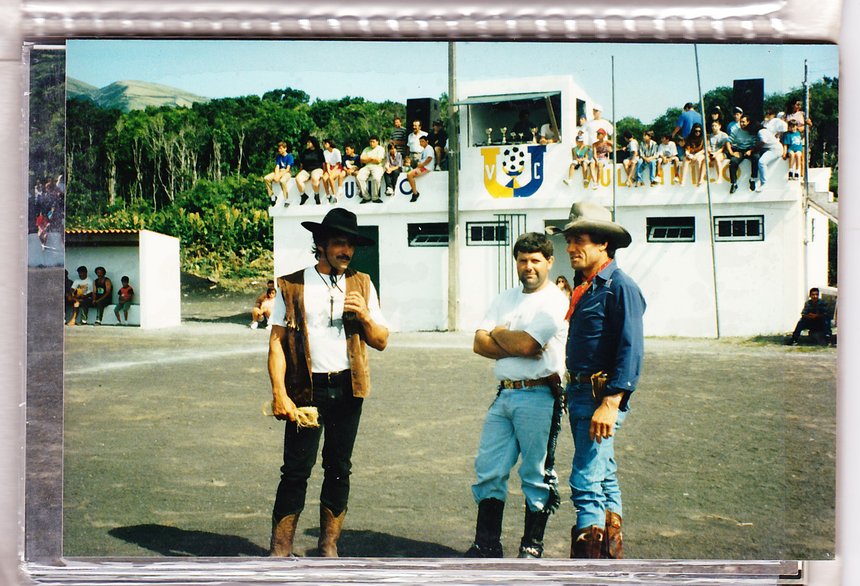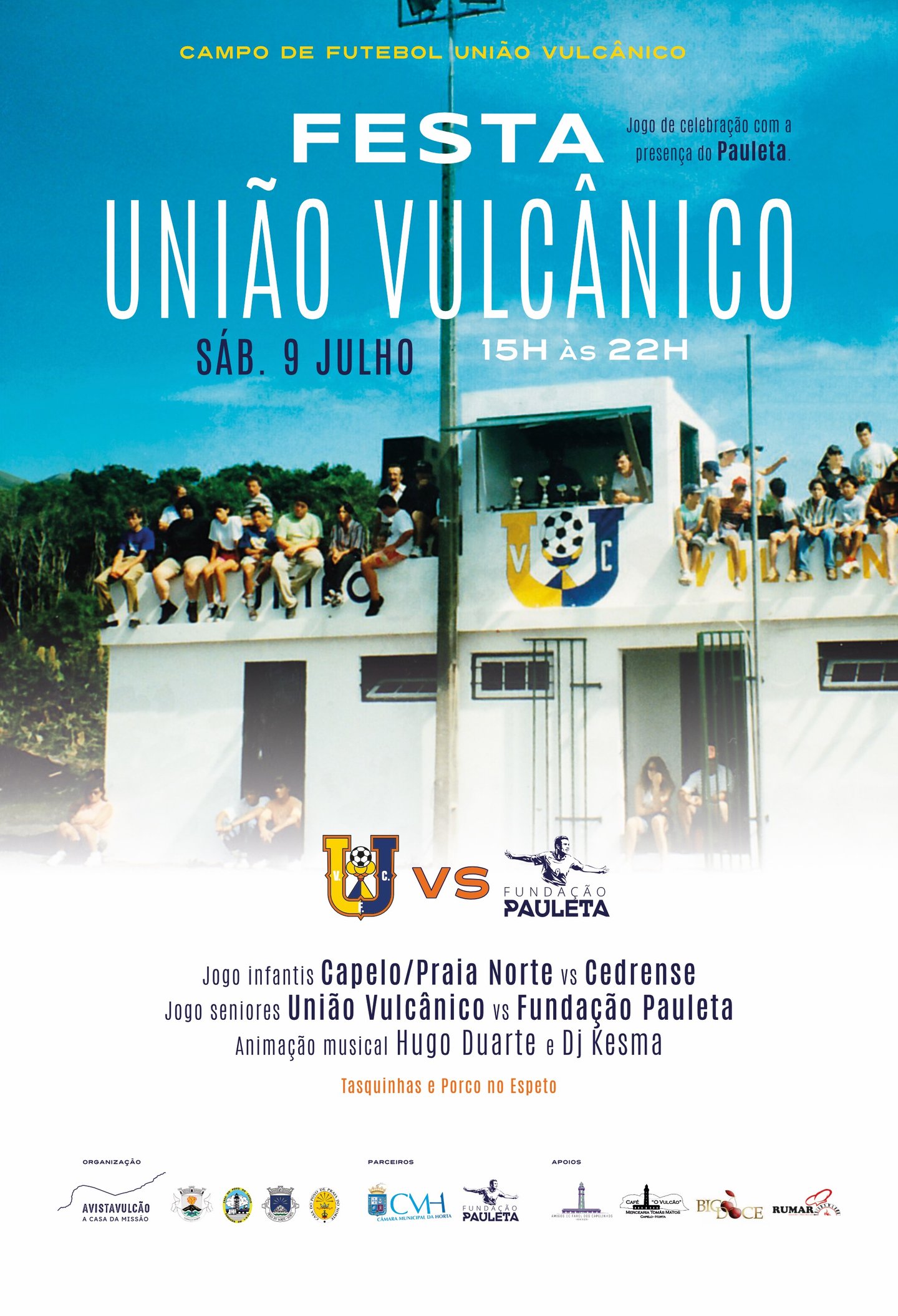2022
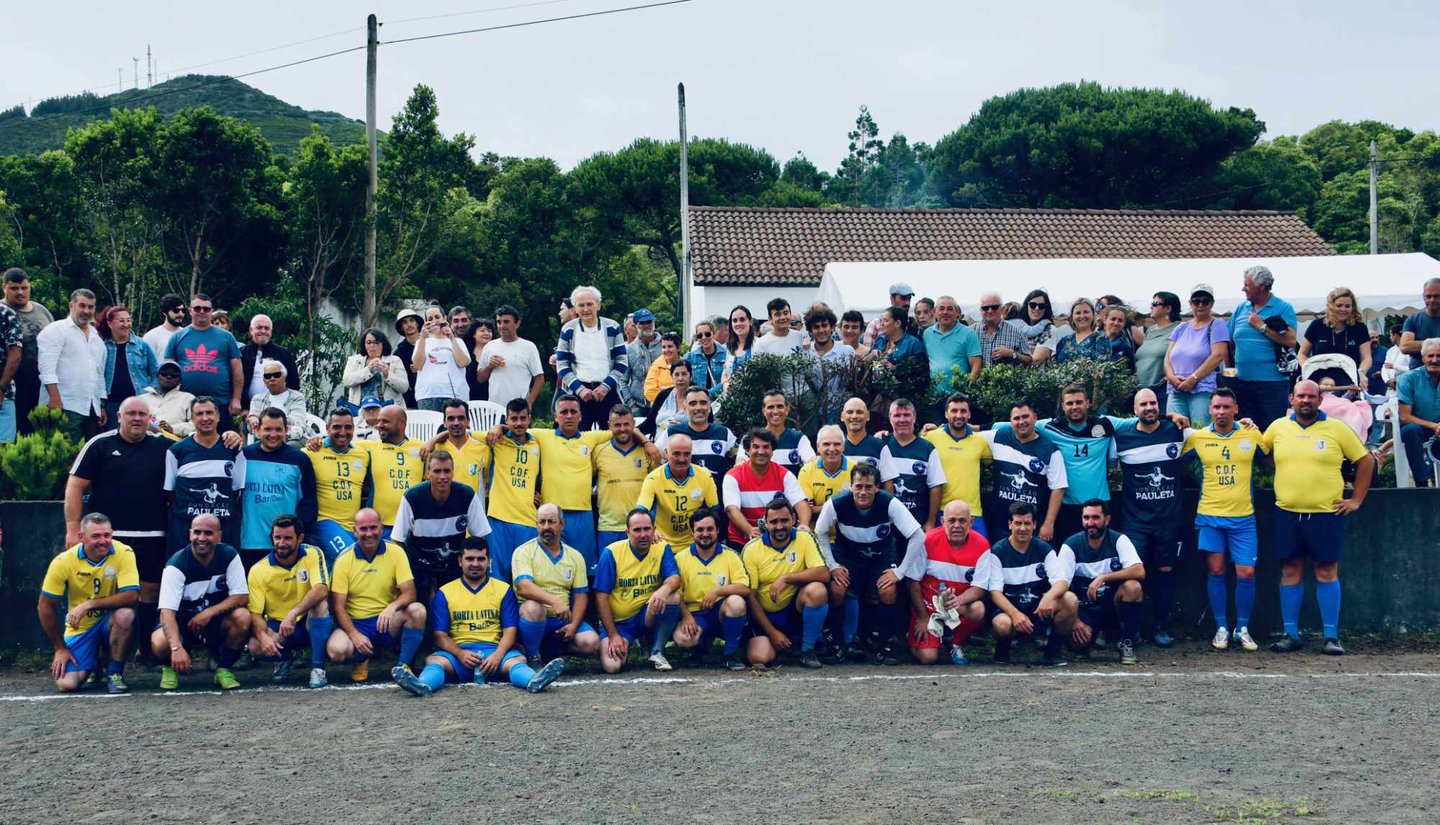
UNIÃO VULCÂNICO CELEBRATES WITH THE PAULETA FOUNDATION
A party for the whole island, for all families, with soccer matches, live music, DJs, taverns and pork on the spit!
A group of citizens from the parishes of Capelo and Praia do Norte got together to organize a party to celebrate the União Vulcânico soccer club, a club that has now gone out of business but which played a social and sporting role in bringing together the communities at this end of the island, uniting the two parishes of Capelo and Praia do Norte from 1990 to 2006.
A great party to pay tribute to the club and the people who worked with it, thus telling its heroic story.

On the club's pitch, located in the Parque Florestal do Capelo, there was a symbolic match between the former União Vulcânico players and the Fundação Pauleta team - with Pedro Pauleta himself in attendance - and a small match between the children of the two parishes and the Grupo Desportivo Cedrense children's team, with live match reports by Luis Prieto, Hildeberto Silva and João Ávila, historical commentary, interviews, live music by Hugo Duarte and DJ Kesma, pork on the spit and taverns! It was highlighted by the presence of the great Azorean footballer Pedro Pauleta, who himself started out playing on dirt pitches.
The festival was organized by the two parish councils of Capelo and Praia do Norte, the two Casas do Povo of Capelo and Praia do Norte, AVISTAVULCÃO: A Casa da Missão in fundamental partnership with the Horta Municipal Council and the Pauleta Foundation.
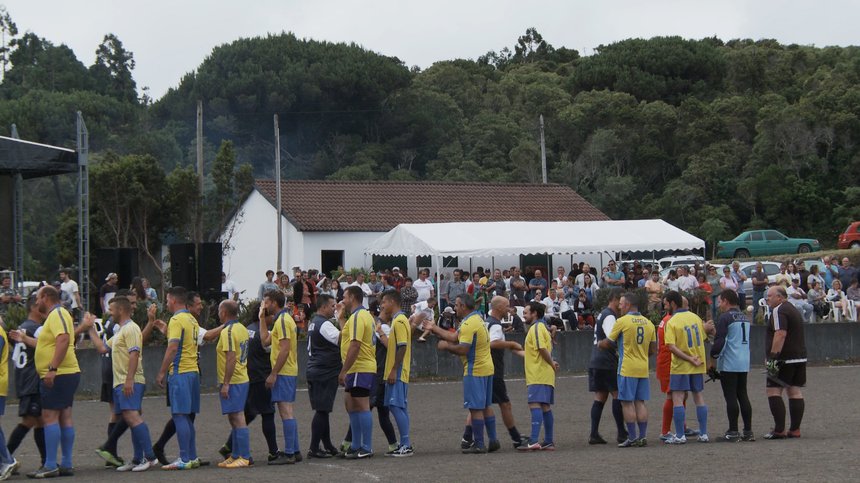
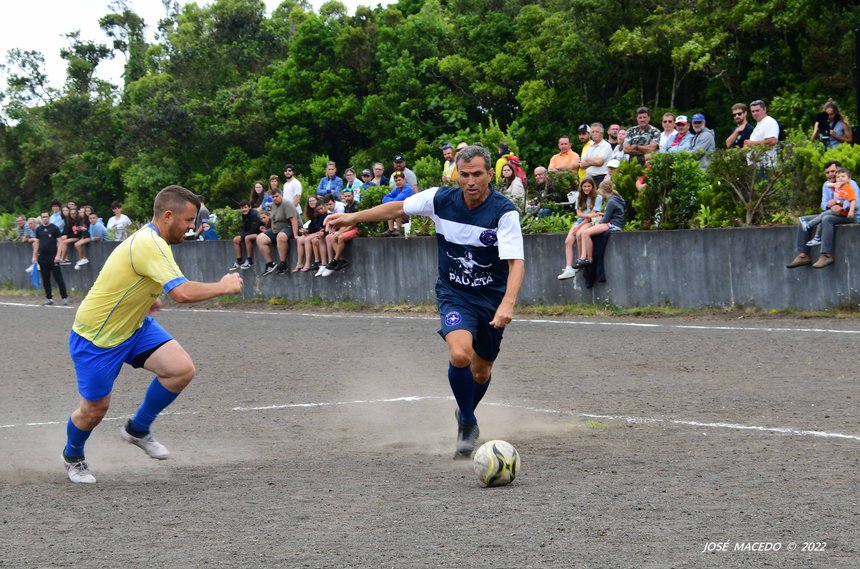


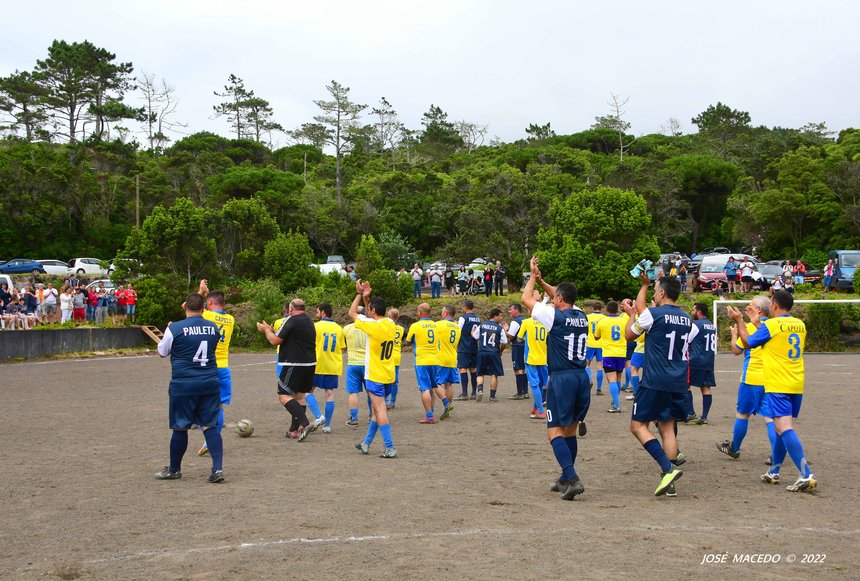
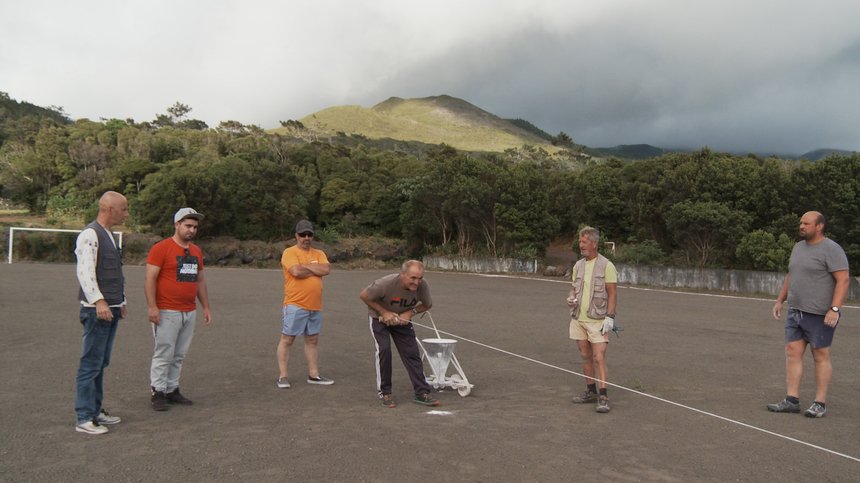
VOLCANOES, SOCCER AND MEMORY
Its name alone is a whole program. Bringing sports together with volcanic events, in an area of the island particularly affected by these events. It was in Praia do Norte (1672) and Capelo (1957) that the two volcanic explosions that took place at the same time as the settlement of Faial Island took place.
This club had the particularity of uniting two sparsely populated parishes and the particularity of only having existed for 16 years. Despite its short lifespan, it made an indelible mark on several generations of the two parishes and, in fact, the whole island speaks of this club with affection and sympathy. It was a different club, with very precarious conditions that had to fight hard to compete in the championships, using many volunteers, a lot of donation, a lot of effort and love for the cause.
This club had another curious aspect: its pitch was built in the late 1980s by the people of the parish themselves, from basalt in an area of Mistério (lava flow), and its pitch was made from volcanic gravel dust. Many people said that, as a result of this pitch, the volcanic players had invented another technique for playing soccer, avoiding falls and resisting shock.
